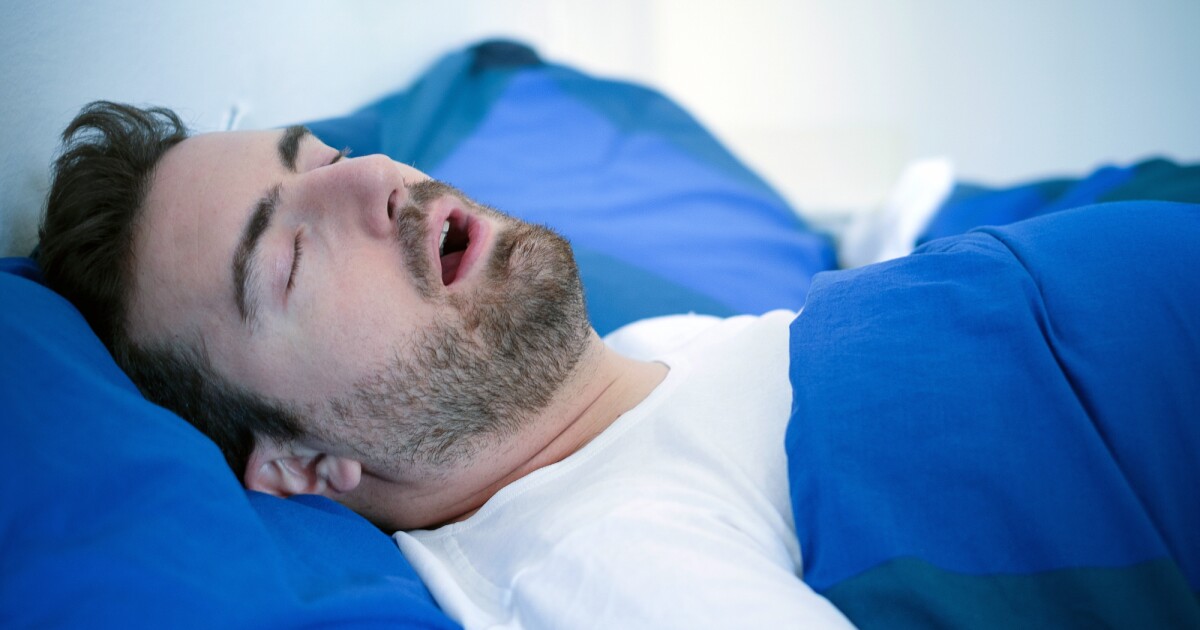For the first time, researchers have shown that tackling obstructive sleep apnea’s two root causes at once, using both oxygen and a jaw-forwarding device, can dramatically cut breathing interruptions during sleep.
Globally, obstructive sleep apnea (OSA) affects approximately one billion people. The condition is caused by two main problems: the throat muscles collapse too easily (“pharyngeal collapsibility”), and the brain’s control of breathing is unstable (“ventilatory control instability”).
While plenty of studies have investigated the effectiveness of treatments targeting one of these problems, few have examined how effective combining treatments to address both is. Now, a new study led by Monash and Harvard Universities has done just that.
“We did this because we know that OSA is due to a combination of anatomical and non-anatomical causes,” said lead author of the study, Associate Professor Brad Edwards, PhD, from the Monash University School of Psychological Sciences. “The MAD [mandibular advancement device] targets the anatomical cause while oxygen helps target a leading but underappreciated non-anatomical cause.”
Similar to a mouthguard, a MAD holds the lower jaw (mandible) and tongue forward, keeping the airway open. It’s often used as an alternative to continuous positive airway pressure (CPAP), which some people find hard to tolerate. The present study tested whether treating both aspects of OSA using supplemental oxygen to stabilize breathing control and a MAD to keep the airway open would work better than using either one alone.
Forty-one adults with moderate to severe OSA (an average of about 49 breathing interruptions per hour) were enrolled in the trial. It was a randomized crossover trial, meaning that each participant tried all four treatment options in random order, each on a different night. The four options were: sham (air only), the control condition; oxygen only (breathing 4 L/min of oxygen during sleep); MAD only; and a combination of oxygen and MAD.
“Mandibular advancement devices are commonly used to treat OSA, while supplemental oxygen is not commonly used; it is often used for other respiratory disorders such as COPD and emphysema,” Edwards said. “This is the first time this combination has been tried in patients with OSA.”
The researchers used overnight sleep studies (polysomnography) to record the following measures: apnea-hypopnea index (AHI), which is the number of breathing interruptions per hour; arousal index, how often sleep was disrupted; and subjective sleep quality, rated on a visual scale. They also analyzed physiological traits to see which types of patients benefited most; that is, those with more “collapsible” airways or unstable breathing control.
Compared to no treatment, oxygen alone reduced AHI by about 33%, MAD alone reduced AHI by about 54%, and combination therapy reduced AHI by about 68%, a statistically significant effect. Combination therapy improved both sleep quality and arousals compared to sham, but not enough to be clearly better than MAD alone. The biggest improvements were seen in people whose OSA was driven by both airway collapsibility and unstable ventilatory control.
From the study’s findings, it appears that this “two-pronged” approach to treatment could help patients who can’t tolerate CPAP and whose OSA has multiple underlying causes.
“Now we need larger trials targeted to selected patients, but this is the first convincing evidence that going after multiple causes of OSA at the same time could have real benefits for patients,” said the study’s senior author, Scott Sands, PhD, an Assistant Professor of Medicine at Brigham and Women’s Hospital and Harvard Medical School. “If widely adopted, it could be a bit like people with high blood pressure taking 2-3 medications to control it, with each targeting different biological pathways.”
The study was published in the European Respiratory Journal.
Source: Monash University
